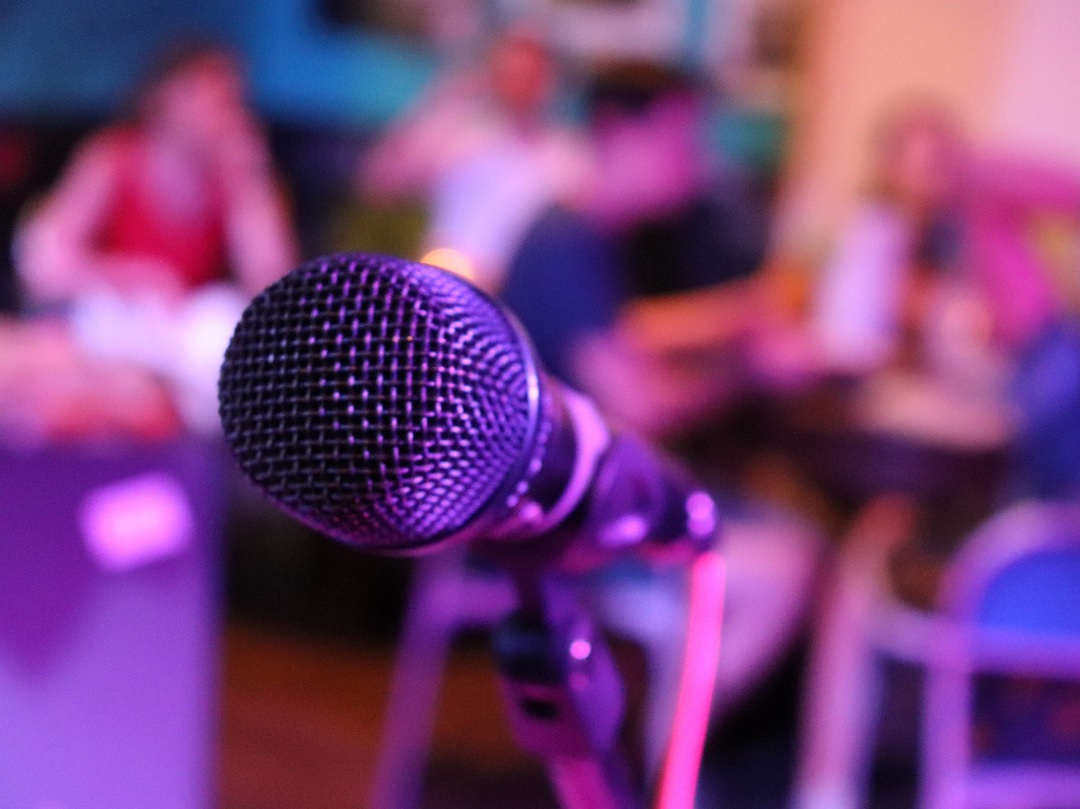
This work is licensed under a Creative Commons Attribution-NonCommercial-NoDerivatives 4.0 International License.
Show authors biography
Introduction: Pansori is a traditional Korean dramatic art form, which likely appeared in the mid-eighteenth century in the southern region of Korea. In pansori, there is a strong inclination toward preserving tradition, especially in regard to training, which is generally considered particularly demanding in terms of risks to vocal health. Nevertheless —as highlighted by recent studies— some innovations took place in pansori characteristics and performances in the last few decades.
Objective: We hypothesize that these innovations have impacted the attitudes of singers and teachers towards pansori training and vocal health issues, and that a new approach to voice training in pansori might be recommended.
Method: Starting with recent evolutions of pansori and considering previous studies, we discuss how these changes might produce innovations —or at least a demand for innovation— in pansori’s training. We also try to capture the viewpoint of pansori students and performers, through an anonymous survey.
Results: Although further investigation is required, the results suggest that a new approach in teaching pansori is emerging and it is increasingly requested by the trainee performers, despite some criticisms from traditionalists.
Conclusion: Unlike previously thought, perhaps a more scientific and health-conscious approach to pansori voice training will be something from which many pansori singers can benefit.
Article visits 834 | PDF visits 24
- Pihl MR. What is Pansori? Chicago Review. 1993;39.
- Park CE. Pansori, the Ancient Korean Art of Storytelling. In: McDonlad M, editor. Traditional Storytelling Today. Chicago: Fitzroy Dearborn Publishers; 2000. p. 122-128. Available from: https://ceas.yale.edu/sites/default/files/files/events/past/20070416korealecture_pansori.pdf
- Jang Y. Pansori Performance Style: Audience Responses and Singers’ Perspectives. British Journal of Ethnomusicology. 2001;10(2):99–121. Available from: https://www.jstor.org/stable/3060664
- Moon S-J. Acoustic Characteristics of Korean Traditional Singing Voice: a Preliminary Report. The Korean Society Of Phonetic Sciences And Speech Technology. 1996;24:367-371. Available from: https://www.koreascience.or.kr/article/CFKO199613842053847.pdf
- Hong KH, Yang YS, Kim HK. Acoustic and Laryngeal characteristics of Korean Traditional Singers. Korean J Otolaryngol. 1996;39(10):1622-1632. Available from: http://jkorl.jatsxml.org/upload/pdf/0011996214.pdf
- Hongm Ki Hwan, Kim HG, Kim Sun Sook. The Professional Singers’ Voice Evaluation between Western Singing and Pansori Based on Vocal Fold Profiles and Acoustic Representations. Commun Sci Disord. 2006;11(3):153–64. Available from: https://www.e-csd.org/upload/11(3)_10.pdf
- Hong KH. The Vocalization for Korean Traditional Song ‘Pansori.’ Journal of The Korean Society of Laryngology, Phoniatrics and Logopedic. 2011;22(2):111–4. Available from: https://jkslp.org/upload/pdf/jkslp-22-2-111.pdf
- Marshall M. The key informant technique. Family Practice 1996. 1996;13(1):92–97. Doi: https://doi.org/10.1093/fampra/13.1.92
- Kim SSHC. Korean Han and the Postcolonial Afterlives of ‘The Beauty of Sorrow. Korean Studies. 2017;41:253-279. Available from: https://www.jstor.org/stable/44508447
- Willoughby H. The Sound of Han: Pansori, Tinbre and a Korean Ethos of Pain and Suffering. Yearbook for Traditional Music. 2000;32:17–30. Doi: https://doi.org/10.2307/3185241
- Killick A. Changgeuk Opera and the Category of the ‘traditionesque.’ Honolulu: University of Hawaii Press; 2010. Available from: https://www.jstor.org/stable/23719471
- Moon S-J. General Acoustical Characteristics of Pansori Singing Voice. Korean Society of Speech Science. 2001;42:15-24. Available from: https://www.koreascience.or.kr/article/JAKO200113842068743.pdf
- Teixeira JP, Oliveira C, Lopes C. Vocal Acoustic Analysis – Jitter, Shimmer and HNR Parameters. Procedia Technology. 2013;9:1112-1122. Doi: https://doi.org/10.1016/j.protcy.2013.12.124
- Mecorio F, Santangelo F, Gucciardo AG. The Korean “han” in Voice Performance: Preliminary Findings of a Pilot Study. ePhonoscope. 2020;3:5–9. Available from: https://ephonoscope.org/vol-3-2020/
- Hirano M, McCormick KR. Clinical Examination of Voice by Minoru Hirano. The Journal of the Acoustical Society of America. 1986 Oct;80(4):1273. Doi: https://doi.org/10.1121/1.393788
- Iwarsson J, Bingen-Jakobsen A, Johansen DS, Kølle IE, Pedersen SG, Thorsen SL, et al. Auditory-Perceptual Evaluation of Dysphonia: A Comparison Between Narrow and Broad Terminology Systems. Journal of Voice. 2018 Jul;32(4):428-436. Doi: https://doi.org/10.1016/j.jvoice.2017.07.006
- Jacobson BH, Johnson A, Grywalski C, Silbergleit A, Jacobson G, Benninger MS, et al. The Voice Handicap Index (VHI): Development and Validation. American Journal of Speech-Language Pathology. 1997;6(3):66-70. Doi: https://doi.org/10.1044/1058-0360.0603.66
- Calvache-Mora CA. Parámetros vocales para definir la severidad de una disfonía. Revista de Investigación e Innovación en Ciencias de la Salud. 2020 Dec 28;2(2):14-30. Doi: https://doi.org/10.46634/riics.39
- Cantor-Cutiva LC, Malebrán Bezerra de Mello MC, Hunter EJ. Translation and adaptation of the Vocal Fatigue Index into Spanish. Revista de Investigación e Innovación en Ciencias de la Salud. 2020 Dec 28;2(2):4-13. Doi: https://doi.org/10.46634/riics.29
- Yun Young Sun, Kim HyangHee, Son Young-Ik, Choi H. Validation of the Korean Voice Handicap Index (K-VHI) and the Clinical Usefulness of Korean VHI-10. Korean Journal of Communication Disorders. 2008;13:216–41. Available from: https://www.e-csd.org/upload/10041581.pdf
- Chae SJ. Hyangyucheung eui pueongdonggwa kwallyeon haeseobon pansori eui hyeonjae wa mirae (Present and Future of Pansori and its Changing Audiences). Pansori Yeongu (Journal of Pansori Studies). 2000;11:115–32.
- McAllister-Viel T. Peer-reviewed Article A Cross-Cultural Examination of Breath and Sound Production in Pansori. Voice and Speech Review. 2001 Jan;2(1):297-311. Doi: https://doi.org/10.1080/23268263.2001.10761483
- Pihl MR. Pansori: the Korean Oral Narrative. Korean Studies. 1981 Jan;5:43-62. Available from: https://www.jstor.org/stable/23718812
- Lee K-S. An Essay on Korean Modes. Asian Music. 1978;9(2):41–7. Doi: https://doi.org/10.2307/833755
- Titze IR. Breath is not the carrier of speech. Voice and Speech Review. 2015 Jan 2;9(1):91-93. Doi: https://doi.org/10.1080/23268263.2015.1091172
- Um Hae-Kyung. New ‘pansori’ in Twenty-first Century Korea: Creative Dialectics of Tradition and Modernity. Asian Theatre Journal. 2008;25(1):24–57. Available from: https://www.jstor.org/stable/27568434
- Killick AP. Jockeying for Tradition: the Checkered History of Korean Changgeuk Opera. Asia Theatre Journal. 2003;20(1):43–70. Available from: https://www.jstor.org/stable/1124052
- Killick Andrew. In Search of Korean Traditional Opera - Discourses of Ch’angguk. Honolulu: University of Hawai’i Press; 2010.



